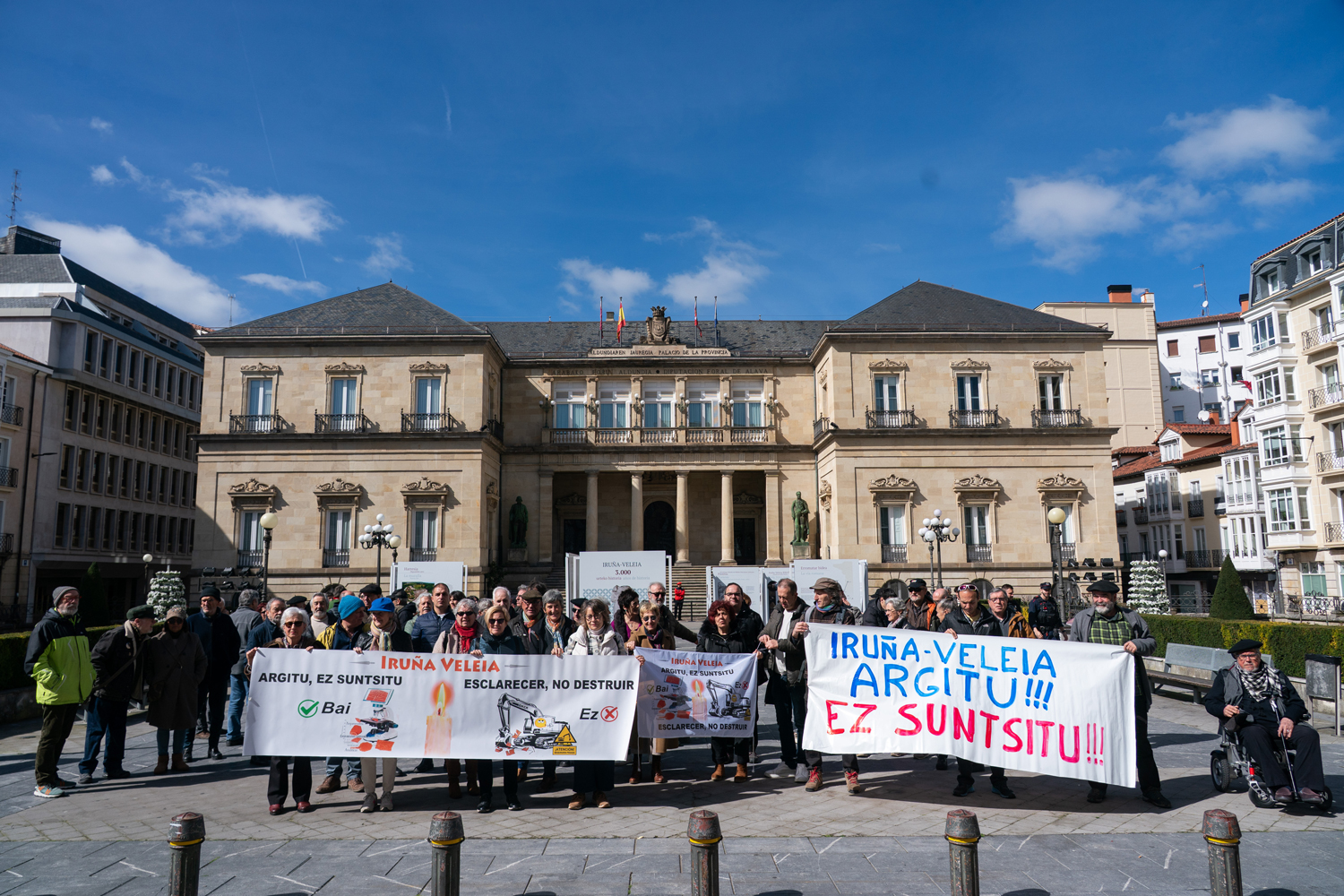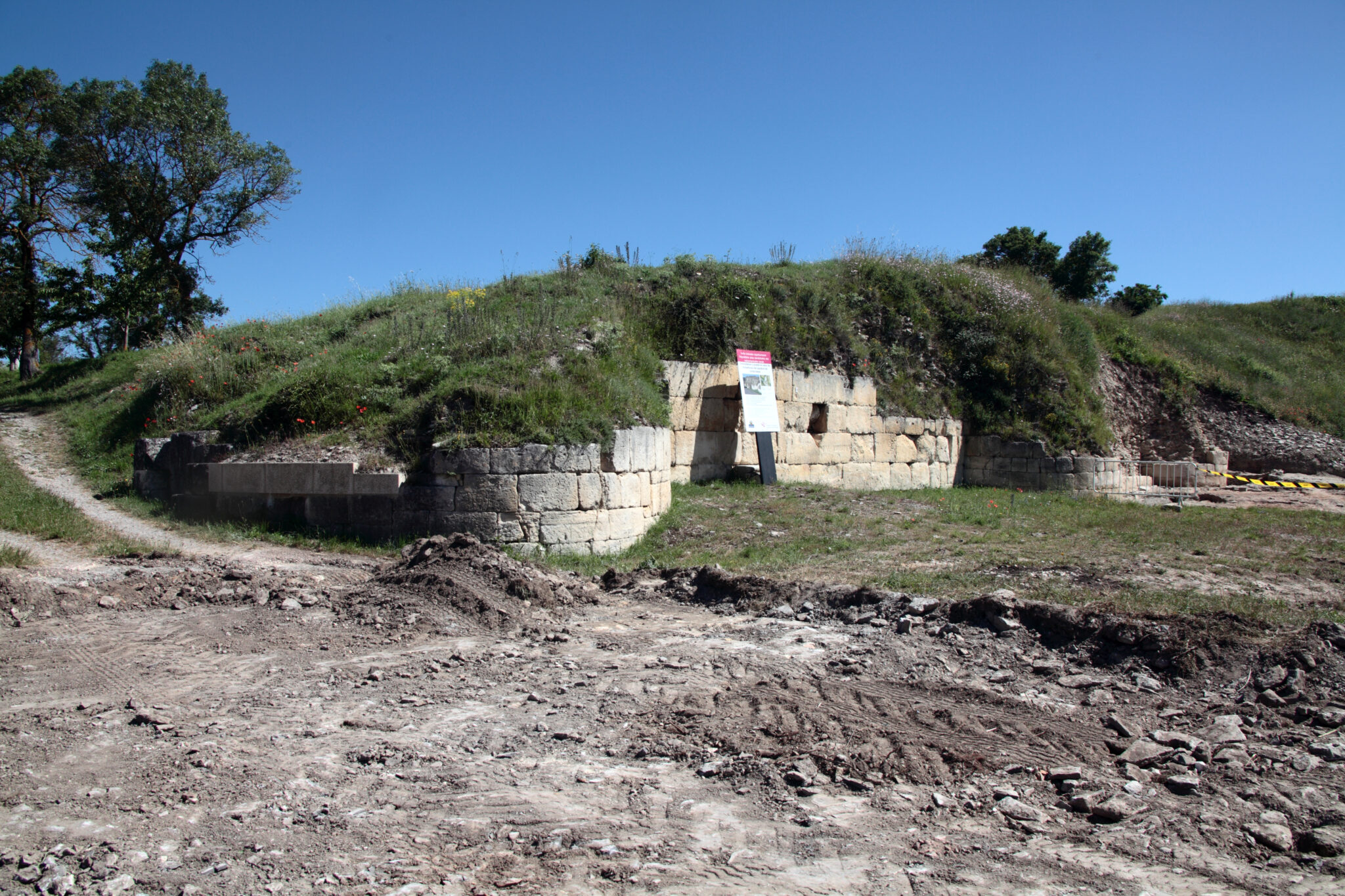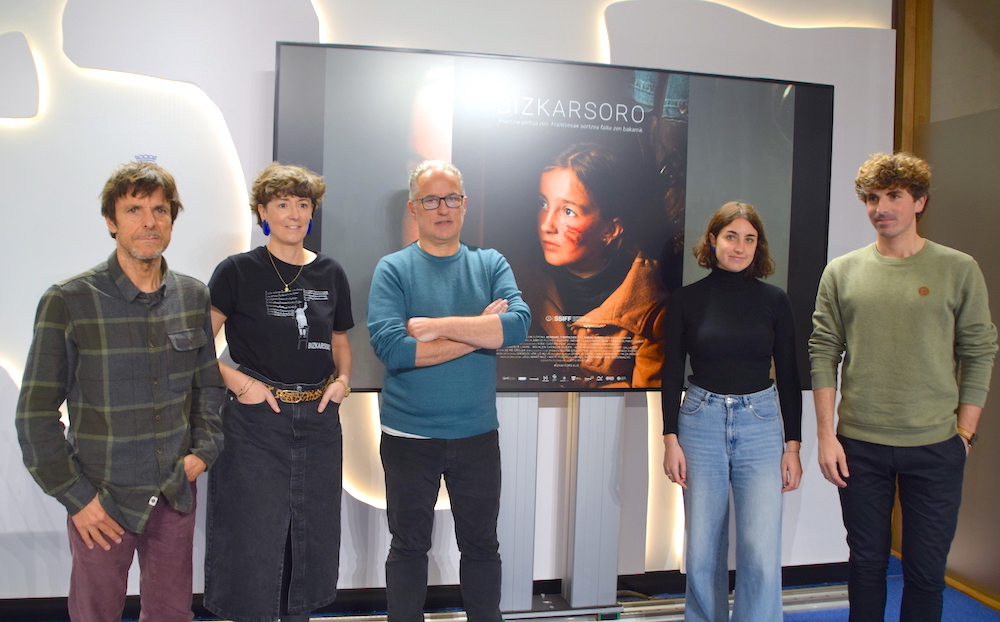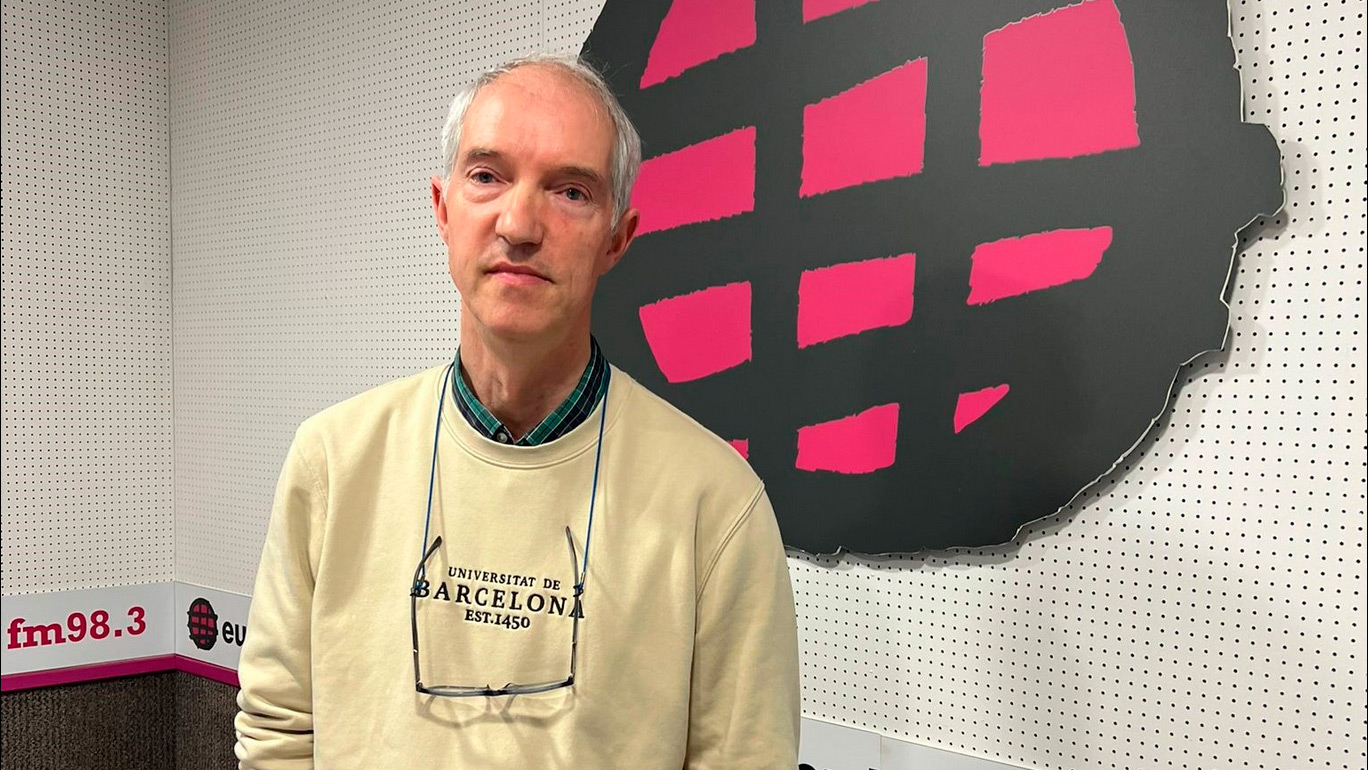They found a 20000-year-old paleohispanic inscription at a Lantz mine.
The team of researchers from the Directorate General of Culture of the Government of Navarra has transcribed as “ikae” or “igae”. It seems that it may be a baskonica inscription, but there is no comparative text, and it is only a hypothesis, since the knowledge of the languages spoken at that time is scarce.
Researchers from the Directorate General of Culture of the Government of Navarra have found an inscription of about 2,000 years in the mining site of Aierdi VIII, in the mining complex of Lantz. None of this has ever been found inside a mine, either in Navarre or throughout the Iberian Peninsula. In a press release, they have explained the importance of the finding, both because of its archaeological context and because of its role as an example of ancestral literacy. Thus, one of the possible hypotheses is that it may be written in the "vascuence" or in the ancestral language of the Basque Country.
Researchers have emphasized that the finding is "unusual", since although at that time Romanization and Latinization were already advanced, it may be an indication "that indigenous languages were used and written".
"Ikae" or "igae"
It is 61 meters from the entrance of the Latrines mine and 18 meters deep. It consists of three "paleohispanic" symbols 23 centimeters long by 13 meters wide, made with a sharp instrument with a point of rome. They have been transcribed as “ikae” or “igae”. Although the scarcity of texts for comparison and the brevity of the word make interpretation difficult, they say that it could be an inscription "in vascuence", as it may be related to the word "ik (h) ai".
The research group of the Directorate General of Culture of the Government of Navarra explains that the word "ikhai" appears in writings made in the seventeenth century by the Basque poet Arnaud Oihenart, and that it is a meaning it has in said texts.
The research group of the Directorate General of Culture of the Government of Navarra explained that the word ikhai is the meaning of the Basque poet Arnaud Oihenart in his writings in the seventeenth century and that it can be compatible with its content. In any case, they insisted that the hypothesis should be taken "cautiously", since, according to them, knowledge of the languages spoken at that time is scarce.
No exact date of registration has been given, but the archaeological context indicates that it was recorded in a process of exploitation of the site some 2,000 years ago, in the Roman era. Given the importance and vulnerability of the finding, the Directorate General for Culture of the Prince of Viana Institution has closed access to the mine and limited the site for research purposes.

After Irulegi's hand
Prior to the inscription of Lantz, in very few deposits have been found words and texts that may be written in the Vascophony variant of the Iberian scripture. The best known was made public two years ago. Text found in a bronze sheet in Irulegi.
In a study carried out by Aranzadi, it was assumed that it was the "oldest document in the history of the Basque Country". The president of Navarra, María Chivite, also attended the presentation ceremony.
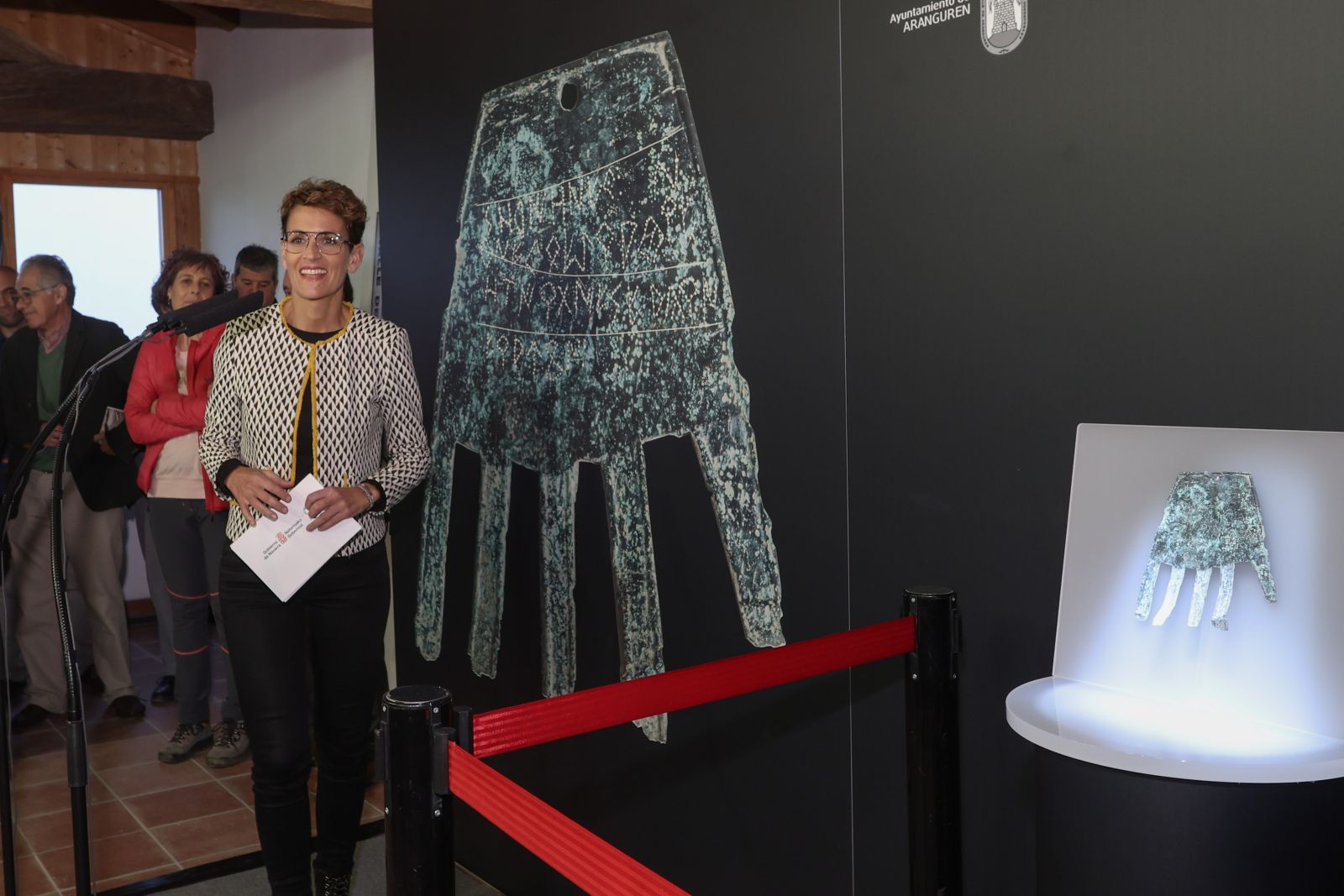
An even bigger project on Lantz mining day
This finding is part of a larger research project, coordinated by the Directorate General of Culture in collaboration with the City Council of Lantz, whose objective is to catalog and study the mining area of Lantz. Since 2022, an international team of experts in archaeology, geology, chemistry, speleology and epistology has been working in the area.
The Lantz mining complex could be one of the most important mining districts of the Western Pyrenees in ancient times
The study has covered an area of almost 2 km², with more than 30 opencast operating points and 20 thinning mouths with underground gallery. Three of them have been the subject of archaeological research to date: Aierdi III, Aierdi IV and Aierdi VIII. Excavations are under way in Aierdi IV. It has been confirmed that the first mining day farms could begin at the end of the Prehistory, but their increase seems to have occurred with the construction of the Roman road Pompelo Oiasso, which facilitated the transport of the resources obtained.
According to the first data, the Lantz mining complex could be one of the most important mining districts of the Western Pyrenees in ancient times. It appears that the Roman administration organized and exploited to the fullest.
Otsailean bost urte bete dira Iruña-Veleiako epaiketatik, baina oraindik hainbat pasarte ezezagunak dira.
11 urteko gurutze-bidea. Arabako Foru Aldundiak (AFA) kereila jarri zuenetik epaiketa burutzera 11 urte luze pasa ziren. Luzatzen den justizia ez dela justizia, dio... [+]
Martxoaren 30erako Iruña-Veleia martxan, SOS Iruña-Veleia eta Euskeraren jatorria elkarteek manifestaziora deitu dute, Aski da! Argitu, ez suntsitu lelopean. Azken bi urteetan "hondeatzaileak sistematikoki eremu arkeologiko oso aberatsak suntsitzeko modu... [+]
Urriaren 26an Iruña-Veleia Argitu, ez suntsitu jardunaldian Zenbat esku daude Iruña-Veleian aurkitutako ostraken testuetan? ponentzia aurkeztu zuen Joseba Lizeagak
“It’s been 18 years since some 400 graffiti appeared on the excavation, 16 years since he was expelled from the excavation camp of Lurmen without scientific evidence and 4 years since the trial was held without clarifying the subject, we can say that we continue to... [+]
Today, all the hierarchies that have been built in our world are the result of a process of global colonization. These global hierarchies of domination are formed by other more specific intertwined hierarchies, that is, classical, ethnic, aesthetic and even linguistic. What we... [+]
In June 18 years ago we started to get to know the paintings of Iruña Veleia. Good news for the Basques.
But the current situation is not so satisfactory. On the one hand, the Provincial Council of Álava (DFA) says that all graphites are false, and that those who think... [+]
As we have known, Joaquín Gorrochategui has been awarded the Euskadi Research Award 2023. SOS Asturias-Veleia hereby expresses its disagreement and discomfort. In our opinion, the deplorable role played by the professor in the Asturias-Veleia case leaves out the merits he can... [+]








